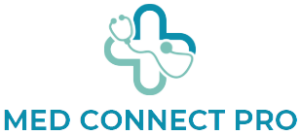In today’s world, where mobility plays a crucial role in daily life and professional settings, traction devices have become indispensable tools for enhancing safety, stability, and performance. Whether for medical purposes, outdoor activities, or industrial applications, traction devices are designed to provide controlled force and support to achieve desired outcomes. This article delves into the fundamentals of traction devices, their types, applications, and benefits, while incorporating the keyword “traction devices” throughout to ensure clarity and focus.
What Are Traction Devices?
Traction devices are mechanical or pneumatic tools designed to apply a pulling force to a specific part of the body or an object. The primary goal of traction devices is to stabilize, align, or decompress tissues or structures to facilitate healing, improve mobility, or maintain safety. In medical contexts, traction devices often target bones, joints, or muscles, helping to realign fractures or relieve pressure on nerves and soft tissues. Outside healthcare, traction devices serve a variety of functions such as improving grip on slippery surfaces or providing leverage in heavy lifting.
Types of Traction Devices
There are several categories of traction devices, each tailored for specific uses. In medicine, common traction devices include skeletal traction and skin traction. Skeletal traction involves pins or wires inserted into the bone to provide direct force, whereas skin traction uses adhesive materials attached to the skin to exert gentle pulling.
Outside of medical use, traction devices also refer to equipment like tire chains, snow traction devices, and climbing gear. These types improve traction on ice, snow, or rocky surfaces, enhancing stability and safety. Industrial traction devices may include cable pullers or winches used to apply controlled force during construction or mechanical repairs.
Medical Applications of Traction Devices
In healthcare, traction devices play a vital role in orthopedic treatment. They are used to treat fractures, dislocations, and muscle contractures by applying a steady force that aligns bones and relieves muscle tension. Traction devices facilitate proper healing by maintaining alignment and reducing pain.
For example, patients with femur fractures might be fitted with skeletal traction devices to keep the bone fragments in place until surgical intervention or healing occurs. Similarly, cervical traction devices help patients suffering from neck pain or herniated discs by gently stretching the neck muscles and decompressing spinal nerves.
Traction Devices in Outdoor and Safety Use
Traction devices are not limited to healthcare; they are essential in outdoor activities such as hiking, climbing, and driving in challenging conditions. Tire traction devices, like chains and cables, improve vehicle grip on slippery surfaces, preventing accidents and enhancing control. These traction devices are especially important in snowy or icy environments where standard tires fail to provide sufficient traction.
In hiking and mountaineering, traction devices such as crampons or microspikes attach to footwear, enabling climbers to maintain footing on ice and steep terrain. The importance of these traction devices cannot be overstated, as they directly impact safety and mobility in potentially hazardous conditions.
Benefits of Using Traction Devices
The use of traction devices offers multiple benefits across various fields. In medical treatment, traction devices accelerate recovery by ensuring proper alignment and reducing muscle spasms. This leads to less pain, faster healing times, and improved functional outcomes for patients.
In outdoor and automotive contexts, traction devices enhance safety by increasing grip and stability. This reduces the risk of falls, slips, and accidents. For industries requiring heavy lifting or precise force application, traction devices provide controlled strength, reducing the risk of injury and equipment damage.
Choosing the Right Traction Devices
Selecting appropriate traction devices depends on the intended use, environment, and specific needs. Medical professionals carefully assess the type of injury and patient condition to determine whether skin or skeletal traction devices are suitable. Outdoor enthusiasts must consider the terrain and weather when choosing tire chains or crampons.
Quality and durability are critical factors when selecting traction devices. Inferior traction devices may fail under stress, leading to accidents or treatment setbacks. Therefore, investing in reliable and well-reviewed traction devices ensures safety and effectiveness.
Maintenance and Care of Traction Devices
Proper maintenance of traction devices prolongs their lifespan and ensures optimal performance. Medical traction devices require regular inspection for signs of wear or loosening. Similarly, tire chains and climbing traction devices must be cleaned, dried, and stored correctly to prevent rust and damage.
Users should follow manufacturer guidelines for maintenance and replacement schedules. Regular checks help identify any issues early, reducing the risk of device failure during critical use.
Future Trends in Traction Devices
Advances in materials and technology are shaping the future of traction devices. Lightweight alloys and synthetic materials improve comfort and durability in medical and outdoor traction devices. Smart traction devices equipped with sensors and feedback systems are emerging, offering real-time monitoring and adjustments for enhanced safety and effectiveness.
These innovations promise to expand the applications and improve outcomes associated with traction devices, making them even more integral to various fields.
Conclusion
Traction devices are versatile and essential tools that serve critical roles in medical treatment, outdoor safety, and industrial applications. Their ability to apply controlled force improves healing, enhances mobility, and increases safety across diverse scenarios. Whether used to realign fractured bones, maintain vehicle control on icy roads, or assist climbers in treacherous terrain, traction devices continue to be a cornerstone of functional support and stability.
Understanding the types, uses, benefits, and maintenance of traction devices empowers users to select and utilize these tools effectively. As technology advances, traction devices will evolve, further improving the quality of care and safety in everyday life.
